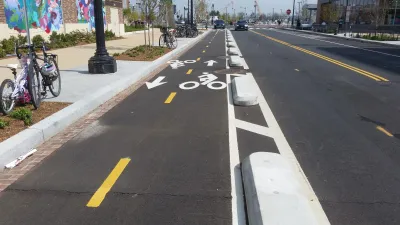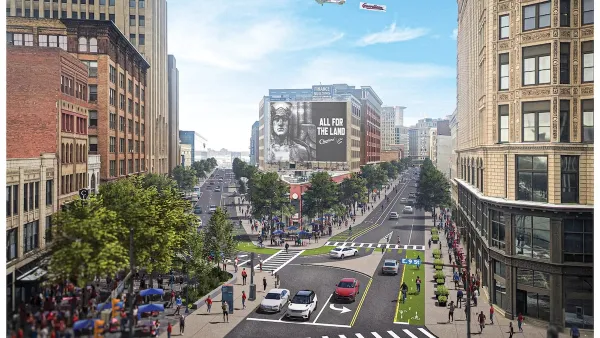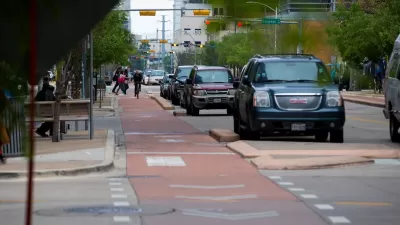Citing aesthetic concerns, the city is removing the concrete barriers and flexposts that once separated Arizona Avenue cyclists from motor vehicles.

Washington, D.C. is removing plastic delineators and concrete barriers from a protected bike lane in Northwest Washington, citing low usage and the aesthetics of the posts, reports Rachel Weiner in The Washington Post.
For now, the poles and concrete barriers have been replaced with plastic barrels. But the city’s intention is to take those away once the rest of the two-way lane is removed and to replace it with painted bike lanes on either side of the street.
This marks the first time the city has removed protected bike lanes, causing concern among bike safety advocates that the move is a first step in a backlash to hard-won bike infrastructure. Significantly, “U.S. Transportation Secretary Sean P. Duffy has frozen all federal grants involving cycling, recently calling bike lanes in congested areas ‘a problem,’” Weiner notes.
Tricia Duncan, an advisory neighborhood commissioner in the area, told The Washington Post that “They are sacrificing safety for aesthetics,” noting that the plan for the lanes came out of “hundreds of hours” of community engagement and planning. “Supporters of the lanes agree they don’t get much through-traffic, but that they were suggested by DDOT in part because of a long-awaited connection to the Capital Crescent Trail that is finally moving forward.”
FULL STORY: D.C. is removing bike lane barriers for the first time, calling them ugly

Planetizen Federal Action Tracker
A weekly monitor of how Trump’s orders and actions are impacting planners and planning in America.

The Simple Legislative Tool Transforming Vacant Downtowns
In California, Michigan and Georgia, an easy win is bringing dollars — and delight — back to city centers.

San Francisco's School District Spent $105M To Build Affordable Housing for Teachers — And That's Just the Beginning
SFUSD joins a growing list of school districts using their land holdings to address housing affordability challenges faced by their own employees.

In More Metros Than You’d Think, Suburbs are Now More Expensive Than the City
If you're moving to the burbs to save on square footage, data shows you should think again.

The States Losing Rural Delivery Rooms at an Alarming Pace
In some states, as few as 9% of rural hospitals still deliver babies. As a result, rising pre-term births, no adequate pre-term care and "harrowing" close calls are a growing reality.

The Small South Asian Republic Going all in on EVs
Thanks to one simple policy change less than five years ago, 65% of new cars in this Himalayan country are now electric.
Urban Design for Planners 1: Software Tools
This six-course series explores essential urban design concepts using open source software and equips planners with the tools they need to participate fully in the urban design process.
Planning for Universal Design
Learn the tools for implementing Universal Design in planning regulations.
Smith Gee Studio
City of Charlotte
City of Camden Redevelopment Agency
City of Astoria
Transportation Research & Education Center (TREC) at Portland State University
US High Speed Rail Association
City of Camden Redevelopment Agency
Municipality of Princeton (NJ)





























